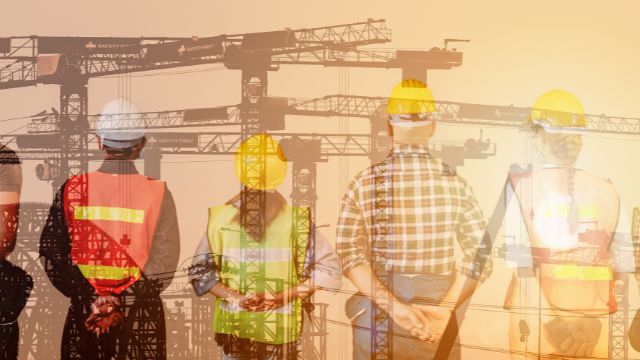Since India is a developing economy, the construction industry in India is huge. Because of the availability of disposable cash, many people are building their homes, and there is also a surge in sky scrapper. With the implementation of GST, everyone was worried about the impact on their industry. The construction industry was also worried about the same as it employs both skilled & unskilled labour. As per an estimate, the construction industry employs over 30 million people in India. If you would also like to know how GST has impacted India’s construction industry, we have compiled the details for you. Go ahead and check it out now.
Impact of GST on the Construction Industry
- Simplified Tax Structure – Before GST, understanding different taxes on construction materials and homes was very tough. There were many new taxes, and people often sought professional help to understand these taxes. Fortunately, GST made it simple for all. Anyone could understand the new structure.
- Construction Contracts – Many people get their homes constructed on a contractual basis. They will hire the labour and a supervisor on a contractual basis, and these people will help the first party construct the building. The responsibility of procuring raw materials can be anyone depending on the contract terms. This may include construction, fabrication, completion, interior work, installation, improvement, modification, renovation, maintenance and repair. GST applies to apartments, residential complexes, industrial buildings, single residential units and all other types of structures. If the person is buying any under-construction building, then 12% GST is applicable on the same. However, if the building is complete, then you don’t have to pay GST on the completed building.
- Construction Material – If you are buying construction material, the GST rates will differ depending on the material you are buying. We have given you the GST rates on different construction materials below.
- Sand – 5%
- Sandstone – 5%
- Gravel, Pebbles, Crushed Stones – 5%
- Roofing Tile – 5%
- Bricks – 12% (With Input Tax Credit) & 6% (Without Input Tax Credit)
- Marble & Granite Blocks – 12%
- Bathroom Fittings, Pipes – 18%
- Mica – 12%
- Iron Blocks, Rolls, Rebar, Wire and Rods – 18%
- Tile, Ceramics, Panels, Cemented Bricks, Slabs, and Glass Cubes – 18%
- Tar Sands, Bituminous or Oil Shale – 18%
- Asphalt or Asphaltic Rocks – 18%
- Paint, Enables, Varnish, Lacquers – 28%
- Electrical Machinery and Components – 28%
- Any type of Cement – 28%
- Input Tax Credit – Real estate developers can claim input tax credit after meeting certain eligibility criteria. The builders should be in possession of the original tax invoice, and the tax should have been paid on those receipts. In addition, the GST record should be updated. Lastly, possession should have been given for everything that was built.
Net Impact of GST on the Construction Industry
If you look at the pre-GST trend, you will notice taxes on the construction industry. The most difficult part about the old regime was the service tax. It was introduced first in 1993, and by 2013, all services were brought under the purview of service tax. Moreover, the input tax credit was not available anywhere in the supply chain, which led to a tax on tax. GST improved the construction industry, and the approach was changed. The definition of construction was made clear, and the tax structure was simplified. In addition, many goods and services have been made eligible for the tax credit. So, in the new regime, benefits have been passed to consumers in multiple ways.
Final Take
As per the data from 2021-2022, the contribution in GST from the construction industry was 15% of the total tax collected. The government is making huge collections from the construction industry. In such a case, we strongly believe that the government should bring some reforms for the construction industry and the labour involved in the sector. The tax rates overall have increased, and there has been an additional burden on the consumer. In such a case, the tax rates should be reconsidered and brought to the minimum possible level for the benefit of everyone. High taxation rates are problematic because people may eventually start evading taxes. Some refining is required here, and we are sure the government will take care of new proposals in the upcoming GST Council Meets.















